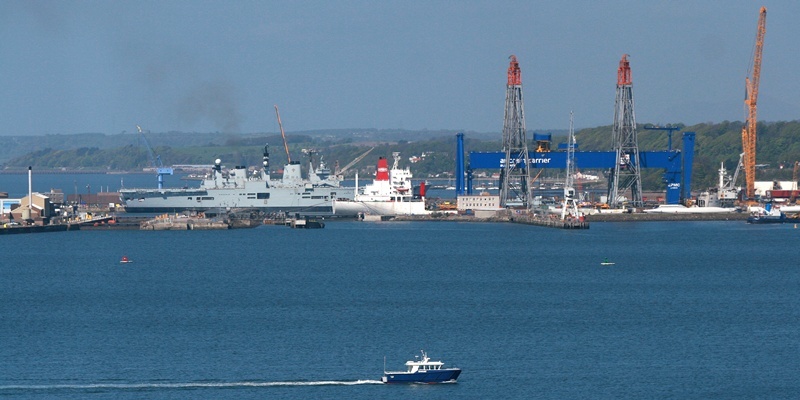A giant crane that will be used in the building of the aircraft carriers at Rosyth dockyard is undergoing tests.
Around 1000 workers will be involved in the work on the Royal Navy vessels HMS Queen Elizabeth and HMS Prince of Wales, as part of an £80 million programme being undertaken by Babcock Marine.
The work has been aided by the UK’s biggest crane, the Goliath, which was transported up the Firth of Forth last month after it had journeyed from China’s Shanghai Zhenhua Port Machinery Co Ltd yard, where it was built.
Babcock have submitted a change of use planning application to Fife Council for the building of the crane, which has a 1000 tonne lifting capacity.
The Goliath crane is the biggest in the UK, with a height of 68 metres (220ft) and a span of 120 metres (390ft). The crane will lift and place the carrier sub-blocks and components without any disruption to the adjacent dockyard area.
It dominates the south-west Fife skyline and is clearly visible from the Forth Road Bridge and approach roads.
It is being tested and it has been estimated that it will have its final handover by this summer, with an operational target of September.
Babcock project director Sean Donaldson said, “The civil works, crane, electrical package and general shipyard upgrade forms a £80 million programme designed to make the Babcock Rosyth facility capable of assembling the aircraft carriers.
“All projects within the programme are performing to budget and schedule, to high safety standards, and when complete the facility will be unique in the UK.”
The number one dry dock at Rosyth, which was built in 1916, is understood to be one of the best locations for building the aircraft carriers.
Rosyth has the largest non-tidal basin for ship repair in the UK, which is thought to be an ideal environment for assembly, outfitting and maintenance activities.
